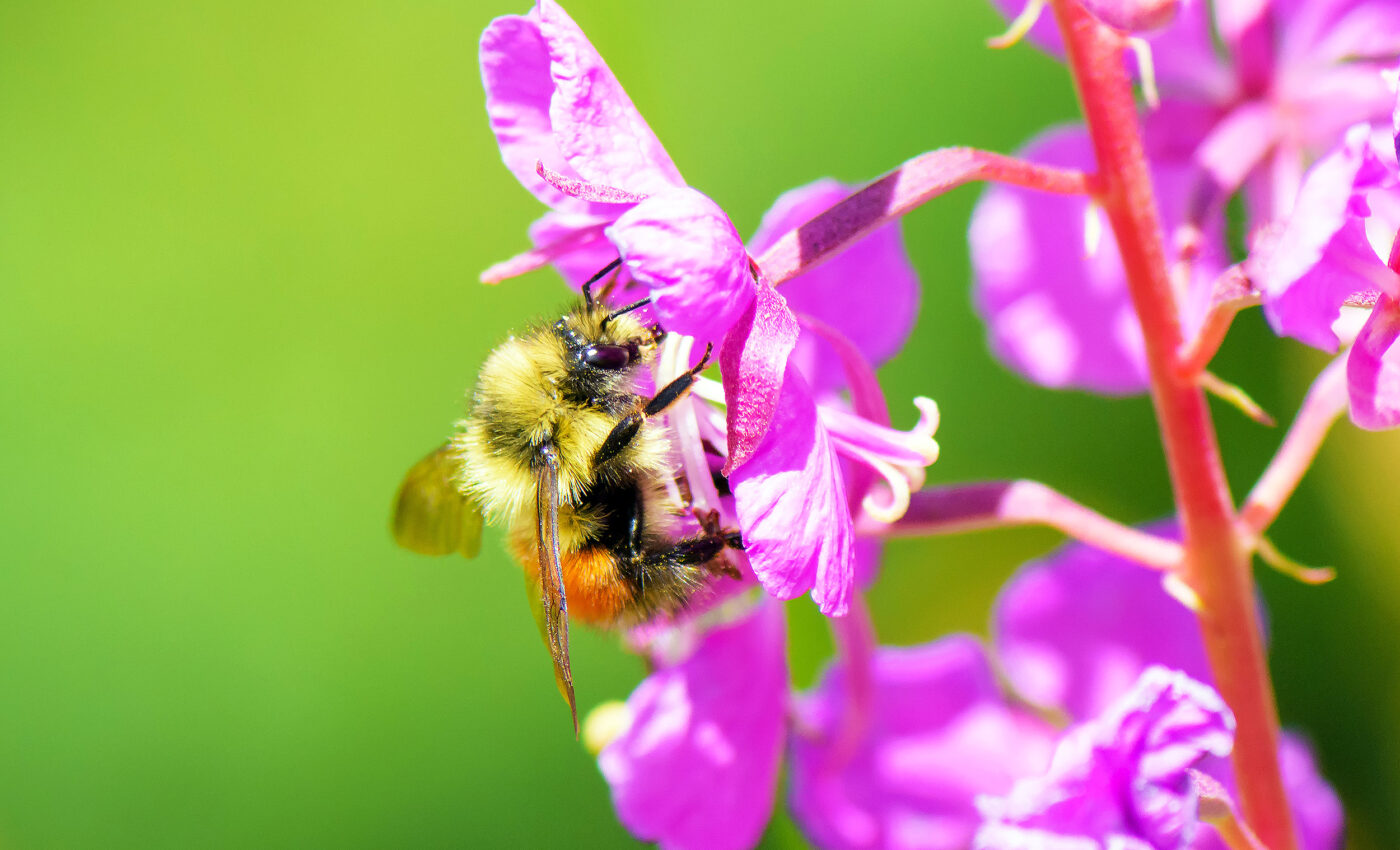
Twenty-percent of Colorado bumblebees are endangered
At Mesa Verde National Park in southern Colorado, a remarkable scene unfolds on a cliffside: a fuzzy bumblebee, Anthophora pueblo, diligently carves into the red sandstone, its powerful jaws creating a symphony of grinding sounds.
This industrious insect, native to Colorado and a recent discovery, captivates Adrian Carper, an entomologist at the University of Colorado Boulder and the CU Museum of Natural History.
“This is just one example of how crazily diverse our native bees are,” Carper marvels.
Colorado’s bumblebee pollinators in peril
Yet, Carper’s latest comprehensive report on Colorado’s native pollinators, co-authored with his team, paints a concerning picture.
Their research reveals a stark decline in pollinator populations over the past 35 years, with some species plummeting by more than half.
Alarmingly, about 20% of Colorado’s 24 native bumblebee species are on the brink of seeking federal protection under the Endangered Species Act.
“That’s a huge alarm call, and that’s only for species we have good data for,” Carper warns, suggesting the actual situation could be more dire.
The report, drawing on data from the Rocky Mountain Biological Laboratory, indicates a 61% decline in insect populations in high-elevation meadows, despite these areas being well-protected.
This decline encompasses a range of pollinators, including bees, butterflies, beetles, flies, and even mosquitoes, many of which are under-researched.
Bumblebees, agriculture and tourism
Colorado’s bees and other native pollinators are not just a vital component of the ecosystem; they are integral to the state’s agriculture and tourism.
Carper highlights the unique relationship between these pollinators and local flora.
For instance, the renowned Rocky Ford cantaloupes, native to southeastern Colorado, rely heavily on native squash bumblebees for pollination.
These bees possess specialized hairs to handle the cantaloupe’s large pollen grains, a feature honeybees lack, making them inefficient pollinators for these flowers.
“Our native bees have co-evolved with our native plants. We recreate in our beautiful high alpine mountains, because they are covered in colorful wildflowers, which wouldn’t be there if they didn’t have our native pollinators to help them reproduce,” Carper explained.
“Additionally, those native plants are integral to our rangelands, supporting over $5 billion worth of livestock across the state,” said Carper.
Threats to native pollinators
The report identifies several threats to native pollinators: habitat loss, pesticide use, climate change, and the introduction of non-native species like honeybees.
The latter, despite their importance in agriculture, are not native to Colorado and have seen a surge in urban hive numbers.
This increase raises concerns about competition for food with native species and the potential spread of diseases and parasites.
“We need to better educate beekeepers on subjects like disease management and swarm control to mitigate honeybees’ impacts on native pollinators,” advises Carper.
Protecting Colorado’s bumblebees
To combat these threats, the report suggests strategies such as creating and connecting habitat patches and reducing pesticide use.
Carper also emphasizes the role individuals can play, advocating for the use of native plants in personal landscaping to support local pollinators.
In summary, while the Anthophora pueblo bumblebee showcases the unique biodiversity of Colorado’s pollinators, the stark reality of their declining numbers calls for immediate action.
Through a combination of research, education, and conservation efforts, there is hope for preserving these vital members of Colorado’s ecosystem and economy.
—–
Like what you read? Subscribe to our newsletter for engaging articles, exclusive content, and the latest updates.
—–
Check us out on EarthSnap, a free app brought to you by Eric Ralls and Earth.com.
—–













